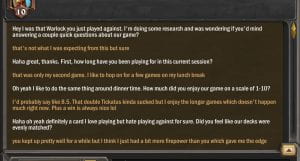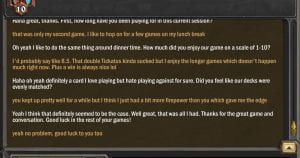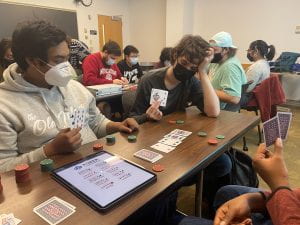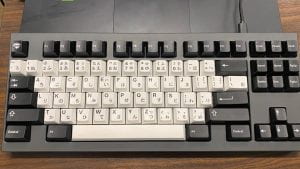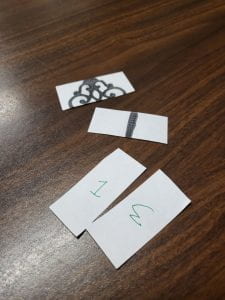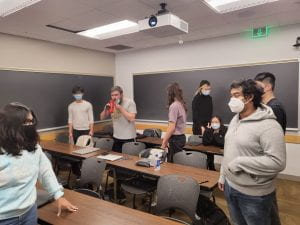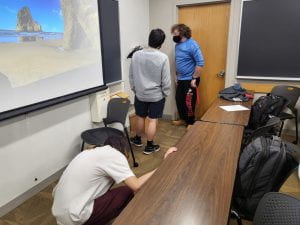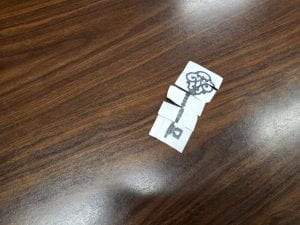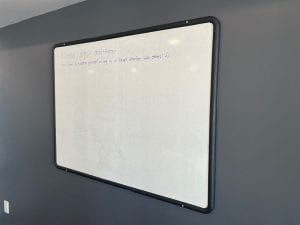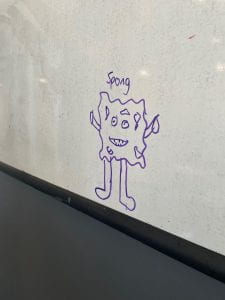Initial Ideas
For my project, I had decided that I wanted to something within a game whose community I considered myself a part of. Unfortunately, I don’t play a ton of online multiplayer games, which limited my options to pretty much just Hearthstone. The other problem with this decision was that Hearthstone does not have a built in chat feature to communicate with your random opponents, you can only chat in-game with people on your friends list. There is a feature that allows you to send a friend request to your most recent opponent, but most people who use that do it to trash talk or harass their opponent after a frustrating game. Thinking about that possible roadblock gave me the idea of creating a scenario with that expected/implied interaction, and flipping it on its head to see what would happen. From there, the Post-Game Interview was born.
The Process
The idea was to add my opponent after a game and, if they accepted, I’d ask a small series of questions about our game: “how long have you been playing today?”, “how much did you enjoy our game?”, and “did you feel we ere evenly matched?”. I wanted to be able to discuss our game in a calm, civilized manner, completely counter to what usually happens in this situation. I felt that this premise was simple enough to be able to do many times, but still be able to create a meaningful interaction. It’s a good thing it was so easy to repeat, because, unsurprisingly, not many of my opponents were willing to participate. Of the 20 or so games I played during this stretch, only 5 of my opponents actually accepted my friend request so that I could actually conduct an interview. The low participation was an interesting, albeit expected, point of data, but I was luckily still able to find out some pretty interesting things from the other data I collected.
Results
Firstly, I was only added back by opponents who had beaten me. This was a bit surprising, as I would’ve guessed that most players would expect a losing opponent to send a friend request with hostile intentions, but these 5 seemed to either not expect that to be my intention, or just not care. Another interesting thing I noticed about these opponents had to do with the in-game emotes. I, and many others who play Hearthstone, usually like to give a friendly Greetings to our opponent at the start of a game, but not all players do this. However, all 5 of my interviewees had returned my Greetings which I found interesting. Finally, from the interview questions themselves, most of these players had only been playing 1 or 2 games so far in this session, and they all ranked pretty highly in their enjoyment of our game and felt we were at least somewhat evenly matched. Overall, I would call this Intervention a success. It was fairly difficult to get participants due to the nature of my idea, but I feel that the people who did participate were given a nice experience in a usually hostile situation, which was really my whole goal. On top of all that, I was also able to collect some interesting data about a game I really enjoy, which was a nice added bonus.
One of my interviews
